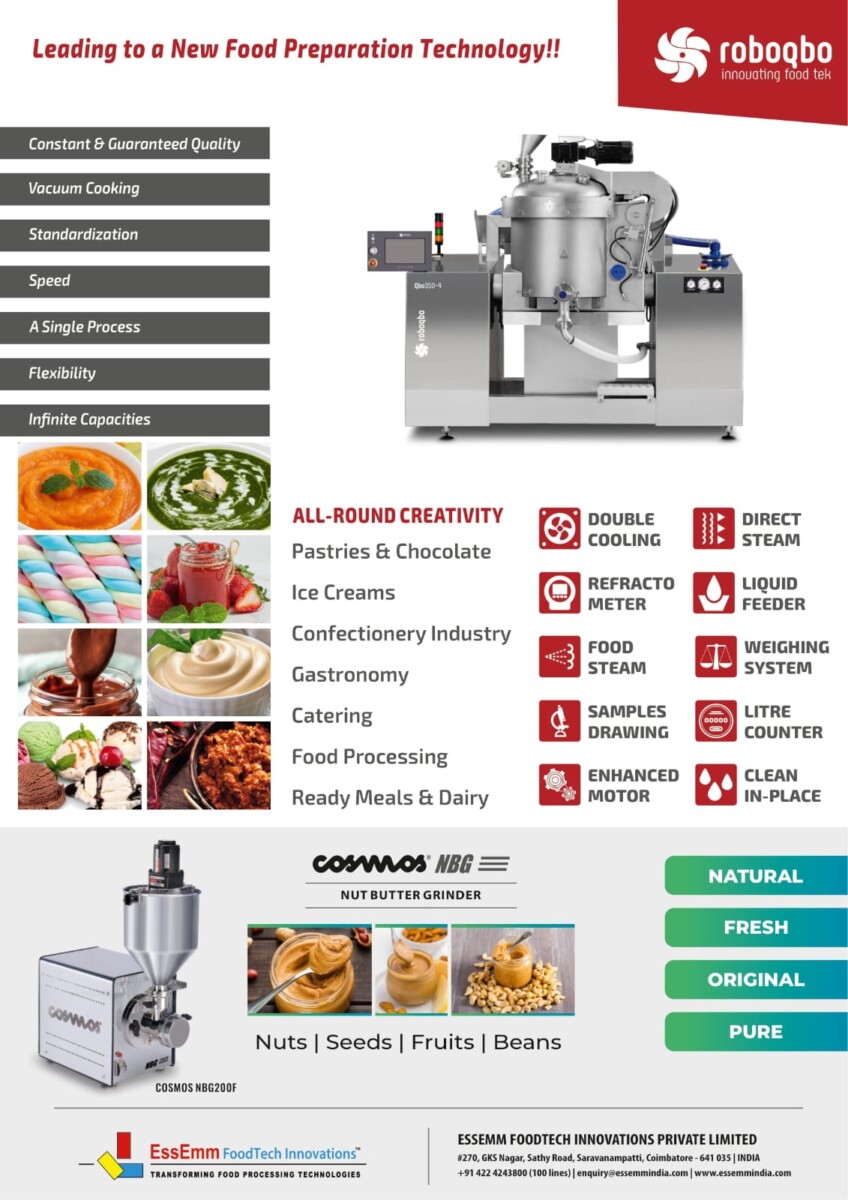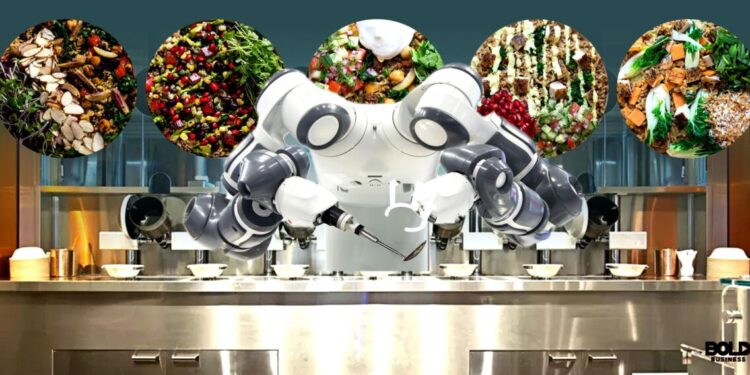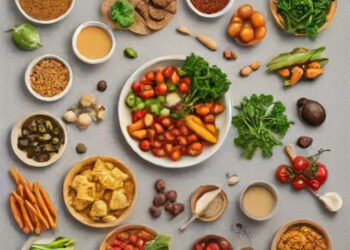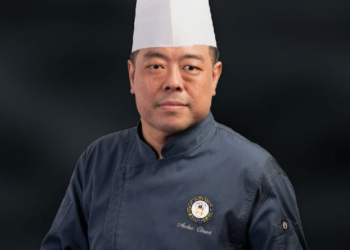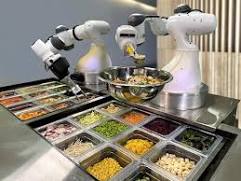
–Akanshya Mukherjee (cbedit@imaws.org)
An automated kitchen can increase employee productivity and reduce the possibility of errors. Automation cuts time, effort and costs while reducing manual errors, giving your business more time to focus on your primary goals.

Post-COVID, Cloud Kitchen has been a trend. Automatic Kitchen has made it very easy to operate digitally. This concept is also applicable to large-scale kitchens, and different types of cuisines as well. The basic idea is that in a cloud kitchen or fast-food chain, there is a shortage of labour because you need more employees to deliver the food. And also, the quality of the food is to be maintained. Cloud Kitchen resolves this by automatic cooking, it affordably automates the procedure. Kitchen Automation exists to reduce skilled labour. It helps improve food costs and labour. But in this case, the kitchen equipment used is expensive.
Ritabrata Biswas, MQXT Social says “It is difficult to predict something in this field, but yes, there are a few ideas we can say have the ability to become something. As a group of chefs too, we discuss the handling of food for various purposes and also since there are different parts to this such as Cloud Kitchen, Cafeteria, hotels, fine dine-ins, and banquets so the automation will be more useful in Cloud Kitchen, QSR, Banquets.
Automated Kitchen can never replace the human identity in the kitchen because when we talk about food, it is an emotion. In 2023, I see a consistent kitchen with Automation where there is value for money, the quality is up to expectations and healthy. In such cases, we cannot ignore automation. We use expensive ovens to make food better and faster. All of these are a part of being efficient, machines help to reduce labour costs.
With automated cooking, a robot is a machine that measures ingredients precisely and cooks them the same way every time. Each of your meals will be prepared the same way and taste the same every time. Furthermore, the robots will always measure the same ingredients for each dish.
 Dhiraj Yashwant Dalvi, Ambros World Foods says “Margins are tough in food service, that’s no news. With robotics in 2023, we can change that. With lower staff costs less turnover and fewer people to hire in the labour shortage crisis, we can completely change the conversation on profitability.
Dhiraj Yashwant Dalvi, Ambros World Foods says “Margins are tough in food service, that’s no news. With robotics in 2023, we can change that. With lower staff costs less turnover and fewer people to hire in the labour shortage crisis, we can completely change the conversation on profitability.
According to him, some of the key trends include the utilization of robots in the kitchen, QSR’s focus on new and updated technology like the drive-the experience and optimize phone orders, Restaurateurs’ plan to expand beyond the typical pop-up, food truck, festival or off-premises, and more customers getting lured away in search of healthier options are to name a few.
In a special view on the Smart Kitchen Layout, the following changes are likely to happen:
- Screens are making an appearance in kitchens as large mounted screens or in-built iPads as recipe displays – with the flick of a finger on the touchpad screen you could be preparing a chicken korma or a chocolate ripple sponge.
- Overhead cabinets are moving to automation with seamless opening and closing.
- Beautiful Corian benchtops now are being made with in-built charging ports – you simply pop your phone down and the bench charges it for you!
- All-in-one zip taps can now be connected to your mains water and at the tap of a button, you can choose between hot, cold, or sparkling water!
- Kitchens are becoming invisible thanks to tambour doors that automatically come down over the bench to hide your benchtop appliances, or even your stove or sink.

Faiyaz Sojitrawala, Hospitality Consultant says ‘Autonomy, not just Automation’. “In the last couple of years, we’ve seen some limited robotic applications automate tasks in restaurants: flipping burgers, frying potatoes, making pizzas or creating a whole separate experience with poke bowls out of a vending machine. These are amazing achievements for the robotics industry and food service. 2023 will be the year where we’ll see this expand not just to single-task automation, but to having a whole meal cooked entirely by robots.”
“Restaurants can build on a key element of today’s food service operations the commissary kitchen where humans handle and prep food, and let robots cook through algorithms in separate autonomous kitchens. This way, they can offer any type of food, not just pizza or salads and deliver it to the end customer promptly and with consistent quality. This technology can be applied to delivery restaurants, as well as QSR, catering and virtually any food service operator. The initial success of these concepts in Europe suggests this model is well on its way to the US and greater global market. However, in India, we will have to wait before this becomes a foreseeable reality mainly due to the high investments needed to build and operate these tech kitchens and low average salaries & incentives within the industry in India.”
Margins are tough in food service, that’s no news. With robotics in 2023, we can change that. With lower staff costs— less turnover and fewer people to hire in the labour shortage crisis— we can completely change the conversation on profitability.
Faiyaz Sojitrawala’s top predictions for the next year are:
Smaller-footprint stores will focus on off-premise strategies.
Restaurants will get Hyper-Personal
Fast food will forge forward, but competition will heat up
Multi-concept companies will explore ways to use data across brands
Tech-friendly concept stores will test the waters
Automation in the food packaging process involves the use of robotics for handling food material in the packaging process. Packing plants previously utilized the processing of food products through manual methods such as using human workers to pick and place food products from one location to another.
Shantanu Gupte, Restaurant Consultant says “The Covid-19 Pandemic marked a paradigm shift in Restaurant & Hospitality Industry. The most critical aspect amplified by the pandemic, throughout food and beverage establishments was the dearth of employees irrespective of the size of the venture. There were two definite reasons. With reduced business, it wasn’t viable for the restaurant owners to keep the same volume of employees.
 “Largely the immigrant staff had returned to their hometowns & weren’t keen to join back at reduced salaries due to conspicuous decline in restaurant sales. The horrific experience they faced travelling during the pandemic or returning to their hometowns added to the employee woes. This meant the Restauranters had to look at their operations differently. Efficient and effective operations, smooth functioning and growth rate came onto people’s radars now more than ever. “, he said.
“Largely the immigrant staff had returned to their hometowns & weren’t keen to join back at reduced salaries due to conspicuous decline in restaurant sales. The horrific experience they faced travelling during the pandemic or returning to their hometowns added to the employee woes. This meant the Restauranters had to look at their operations differently. Efficient and effective operations, smooth functioning and growth rate came onto people’s radars now more than ever. “, he said.
Speaking in detail on the concept of Outsourcing, he felt, most restaurants will outsource non-essential or minor functions. Like desserts, gravies, batters etc. & ensure a lean kitchen team with specialization. The top 5 predictions on outsourcing are:
- We will see increased automation & AI applications when it comes to Ordering raw materials, F&B controls, Audits, food costing, storage etc.
- Similar automation will be observed in order taking. while it is self-ordering through Digital kiosks, Tabs or digital menus.
- Customer data collection which is now a crucial element will see automation. So instead of comment cards & manual feedback forms, we will see software’s & apps integrated with the ordering system which will largely automate data collection.
- We can cohesively summarize the kitchen operation in 2023 & going ahead as good food needs to be made with love & passion. It won’t be possible to make a kitchen completely automated.
At the same time all the operations which are general, laborious & time-consuming will see automation coming though . What will be left is a speciality or experiential dining which cannot be automated“
THIS ARTICLE IS POWERED BY
